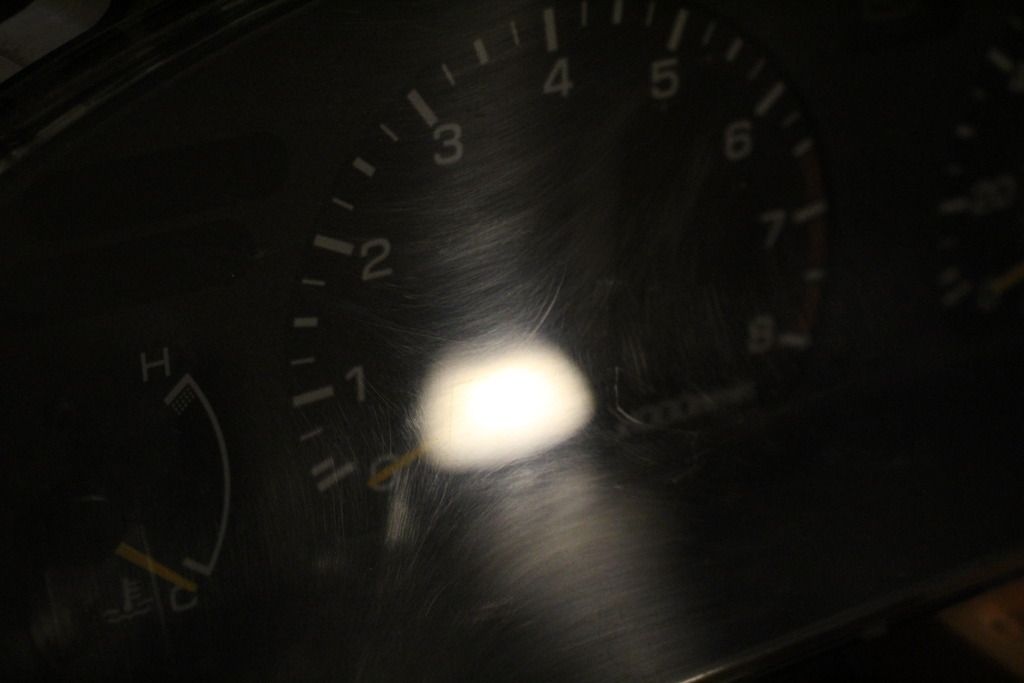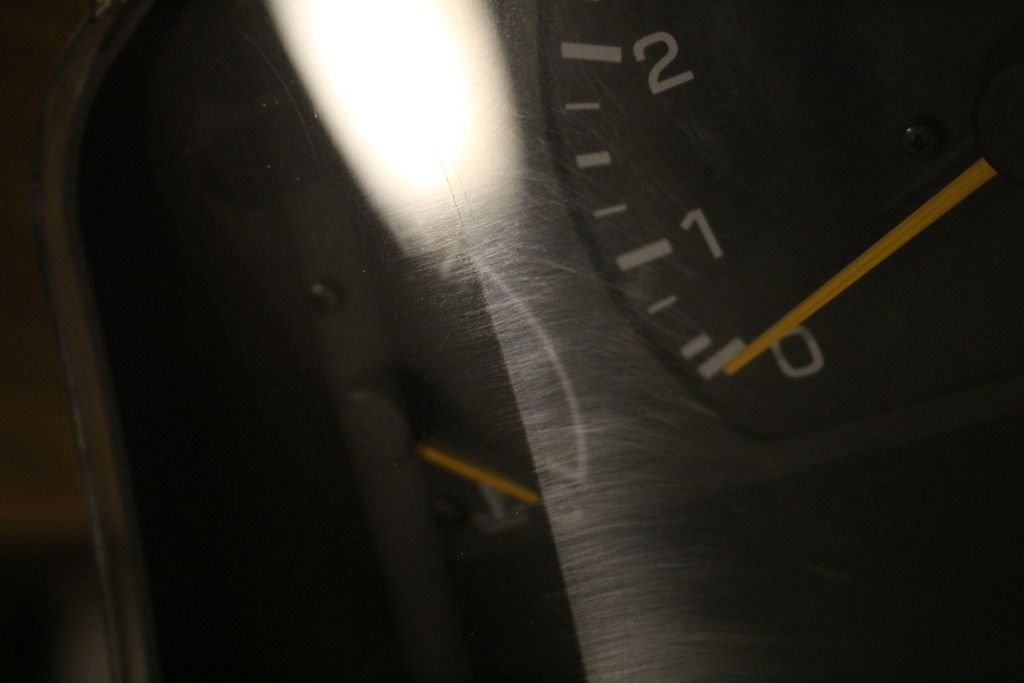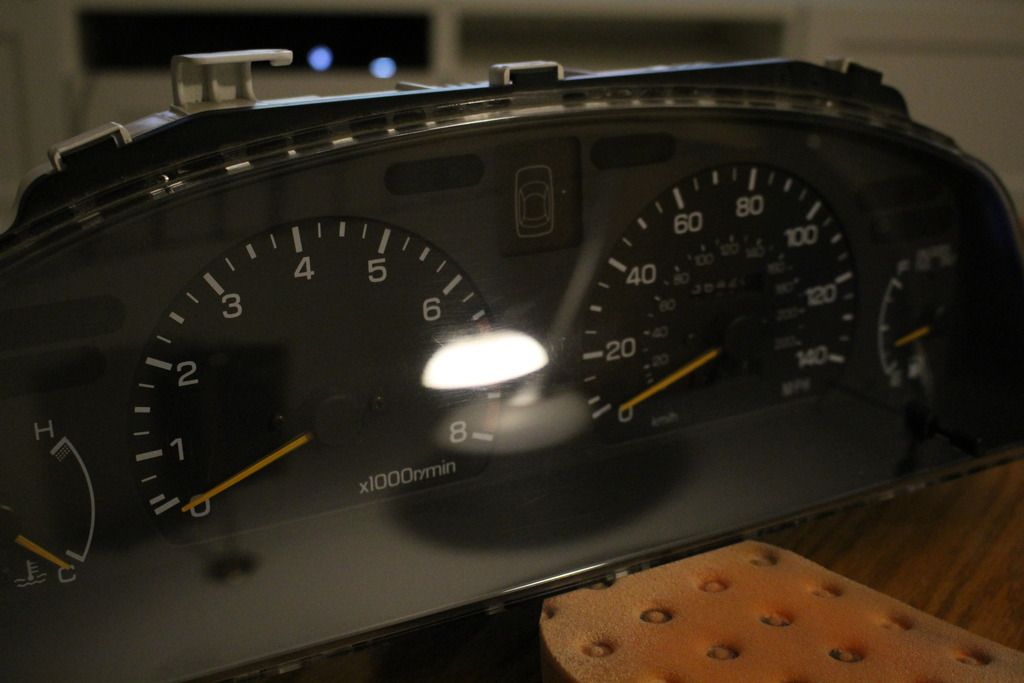billboard2001
New member
- Sep 15, 2013
- 119
- 0
I had looked around on the forum and hadn't found any answer to my question so I decided to just explore the subject myself, so here goes...
The issue I was interested in tackling is correcting the minor scratches/marring/smudges that occur on the soft plastic of a gauge cluster.
First off, a big thank you to Dominic S. for providing the demo gauge cluster (from a subaru), as it's much easier to experiment worry-free when it's not a cluster from a personal/customer rig.
I'm assuming other people have had issues with this as well, either when trying to clean the dust from the plastic or having a customer produce the scratching/marring themselves when cleaning their own interiors. Despite using what you think is light pressure, sometimes the plastic just ends up getting scratched, and it is frustrating. I know from experience that the Subaru and Toyota gauge plastic is pretty soft, but I haven't had experience with others and again, not really wanting to find out if I didn't have to.
Here is a picture that illustrates what I'm talking about.

Products I used:
-Meguiars M105 and M205 (polishes)
-Lake Country CCS Euro Foam Hand pad, Orange light cutting applicator
-Glasses/electronics cleaning cloth (such as the one Apple includes with iPads)
-High gsm microfiber for lightly wiping the polish off.
I started with the M105+orange pad and that seemed to remove the majority of the scratches, though it did leave a slight haze. I then moved on to the M205+orange pad to finish it up and it seemed to give a pretty good end result, though there still were some slight issues that I could never really get out.


Next, I tried using M205+electronics cloth and polished with my finger. I figure that this may be the easier method for in-place correction for the majority of the cases as not many people want to take out the gauge cluster. The results were the same, though the index finger was sore from all of the rubbing. I tried going in different directions so see if that would change the direction of the left over marks but it didn't really seem to change so I'm not sure if that is just an issue with the plastic itself or not?
If anyone else has had experience with this, whether using different methods to correct or just experience with plastics from different manufacturers please feel free to chime in! Overall it was worth doing as the final result was a big improvement from where it started...

The issue I was interested in tackling is correcting the minor scratches/marring/smudges that occur on the soft plastic of a gauge cluster.
First off, a big thank you to Dominic S. for providing the demo gauge cluster (from a subaru), as it's much easier to experiment worry-free when it's not a cluster from a personal/customer rig.
I'm assuming other people have had issues with this as well, either when trying to clean the dust from the plastic or having a customer produce the scratching/marring themselves when cleaning their own interiors. Despite using what you think is light pressure, sometimes the plastic just ends up getting scratched, and it is frustrating. I know from experience that the Subaru and Toyota gauge plastic is pretty soft, but I haven't had experience with others and again, not really wanting to find out if I didn't have to.
Here is a picture that illustrates what I'm talking about.

Products I used:
-Meguiars M105 and M205 (polishes)
-Lake Country CCS Euro Foam Hand pad, Orange light cutting applicator
-Glasses/electronics cleaning cloth (such as the one Apple includes with iPads)
-High gsm microfiber for lightly wiping the polish off.
I started with the M105+orange pad and that seemed to remove the majority of the scratches, though it did leave a slight haze. I then moved on to the M205+orange pad to finish it up and it seemed to give a pretty good end result, though there still were some slight issues that I could never really get out.


Next, I tried using M205+electronics cloth and polished with my finger. I figure that this may be the easier method for in-place correction for the majority of the cases as not many people want to take out the gauge cluster. The results were the same, though the index finger was sore from all of the rubbing. I tried going in different directions so see if that would change the direction of the left over marks but it didn't really seem to change so I'm not sure if that is just an issue with the plastic itself or not?
If anyone else has had experience with this, whether using different methods to correct or just experience with plastics from different manufacturers please feel free to chime in! Overall it was worth doing as the final result was a big improvement from where it started...
